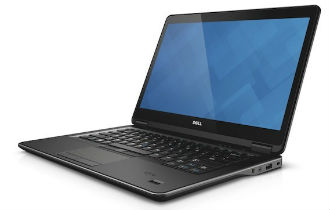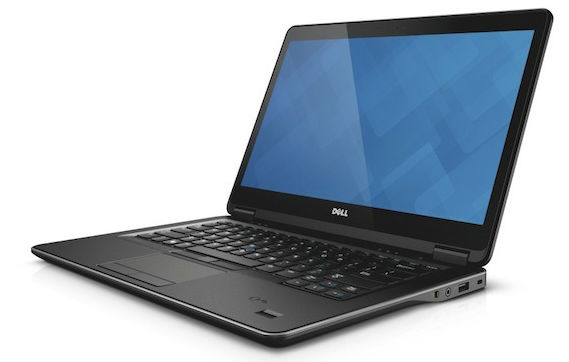 Dell has revamped its range of business friendly Latitude products, with a nice ultrabook on top. The Latitude 7000 is the new anorexic flagship, while Latitude 5000 and 3000 series products are designed with SMBs, education and small customers in mind.
Dell has revamped its range of business friendly Latitude products, with a nice ultrabook on top. The Latitude 7000 is the new anorexic flagship, while Latitude 5000 and 3000 series products are designed with SMBs, education and small customers in mind.
The 7000 is quite a looker, a far cry from dull business designs of the past. The 12-incher is 20mm thick and it weighs just 2.99 pounds, which is not bad but it’s still a bit bulkier than the MacBook Air. However, unlike the Air, it is also available with a 14-inch screen, tucked underneath a carbon lid. All the usual business features are on board, like Intel vPro processors, TPM, optional fingerprint and smartcard readers, as well as NFC.
Battery life should be good, too. Dell promises up to 8.5 hours on a small three-cell power pack, which is pretty good. It can use existing E Docks as well as wireless WiGig docks. USB 3.0 and HDMI are on board as well. Although it’s thin and light, it is rather rugged and it complies with MIL-STD 810G.
Base models ship with 1366×768 matte screens, but they are available with 1080p touchscreens, with a pane of Gorilla Glass on top. The 14-inch is available with a matte, non-touch 1080p panel. Both models ship with SSDs as standard, but the 14-inch version can also be ordered with a hybrid drive for more storage on a budget.
The entry level 3000 series and the mid-range 5000 series come in two sizes, 14 and 15 inches. They can also be ordered with touchscreens and due to their size they offer a lot more options under the bonnet, including discrete graphics, a bigger choice of processors, three different battery sizes and hard drives ranging up to 1TB, or SSDs up to 256GB.
Pricing starts at $599 for the 3000 series, but the sleek 7000 series is a lot pricier, starting at $1,049 in the US. There is still no word on 5000 series pricing.










